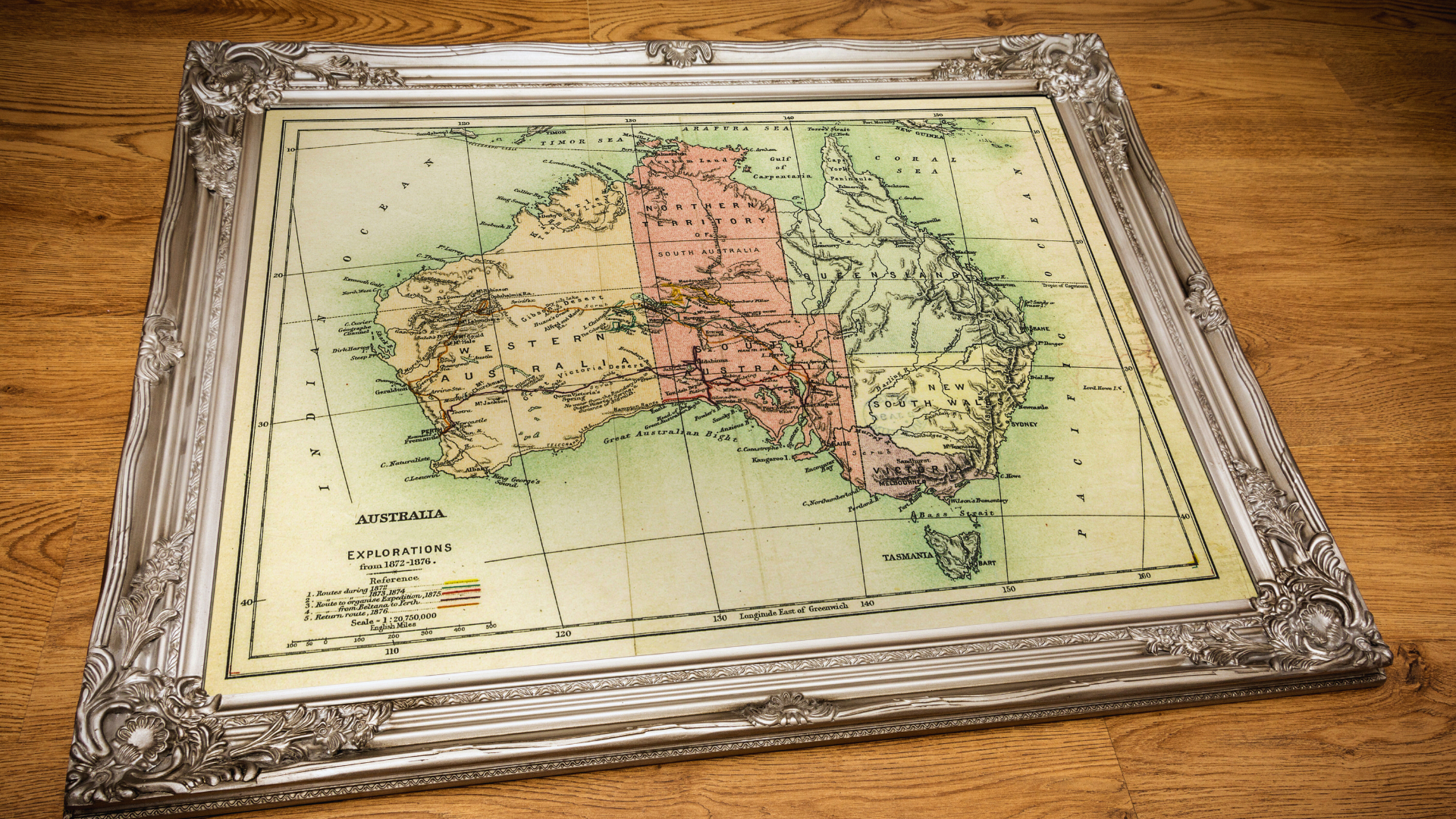Throughout history, countless archaeological discoveries have unveiled artifacts that offer a glimpse into ancient civilizations. These items not only tell stories of the past but also provoke curiosity about the lives of those who came before. Among the most intriguing artifacts ever discovered are the Antikythera Mechanism, the Terracotta Army, and the Rosetta Stone, each providing unique insights into human achievement and culture.
Artifacts like these serve as powerful reminders of humanity’s enduring quest for knowledge and innovation. Each discovery opens a window into the technological advancements, artistic expressions, and everyday lives of ancient peoples. By examining these remarkable objects, one can appreciate the complexities and richness of human history.
The field of archaeology continues to evolve, revealing new finds that challenge existing narratives. As researchers unearth more artifacts, they add depth to our understanding of ancient societies and their contributions to modern civilization. These findings stimulate ongoing interest and dialogue about our collective heritage.
Groundbreaking Archaeological Discoveries
Numerous archaeological discoveries have transformed our understanding of ancient civilizations. These findings, encompassing advanced knowledge and practices of prehistoric peoples, offer valuable insights into human history and cultural development.
Gobekli Tepe
Gobekli Tepe, located in modern-day Turkey, is one of the earliest known monumental structures. Dating back to around 9600 BCE, it predates Stonehenge by several millennia. This archaeological find consists of massive stone pillars arranged in circular configurations, showcasing intricate carvings of animals.
The site’s purpose remains a subject of debate, but it appears to have been a significant ritual center for early hunter-gatherers. Its construction implies a high degree of social organization and advanced knowledge, challenging previous assumptions about the capabilities of prehistoric civilizations.
The Dead Sea Scrolls
The Dead Sea Scrolls, discovered between 1947 and 1956 near the Dead Sea, comprise over 800 ancient manuscripts. These texts include biblical scriptures, sectarian writings, and various religious artifacts. Their age ranges from the third century BCE to the first century CE, providing critical insights into Jewish history and early Christianity.
Among these scrolls is the Isaiah Scroll, one of the best-preserved biblical texts, which enhances understanding of religious practices and beliefs during that era. Scholars regard these writings as crucial for the study of ancient languages and cultural contexts.
Stonehenge
Stonehenge, located in Wiltshire, England, is one of the most famous prehistoric monuments. Estimated to have been constructed between 3000 and 2000 BCE, it features a circular arrangement of large standing stones, some weighing over 25 tons. Stonehenge is thought to have served as both a burial ground and a ceremonial site.
Research suggests its role in astronomical observations. The alignment of the stones with celestial events, such as solstices, reveals the advanced knowledge of ancient cultures regarding astronomy. This aspect highlights the complexity of their societal structures and belief systems.
The World’s Most Mysterious Artifacts
Several artifacts from ancient history stand out for their enigmatic qualities and potential implications for our understanding of past civilizations. Each of these items raises questions about advanced knowledge and the historical narratives surrounding their existence.
Antikythera Mechanism
The Antikythera Mechanism, discovered in a shipwreck off the Greek island of Antikythera in 1901, is a remarkable example of ancient engineering. This intricate device dates back to around 150-100 BC and is believed to be the world’s first analog computer.
Its primary function was to predict astronomical positions and eclipses for calendrical and astrological purposes. The mechanism features a series of gears that indicate celestial events, demonstrating an advanced understanding of astronomy. Its complexity suggests that the Greeks possessed knowledge that would not reappear until the Renaissance.
The Voynich Manuscript
The Voynich Manuscript is an illustrated codex, written in an unknown script and dating back to the early 15th century. Discovered in 1912 by rare book dealer Wilfrid Voynich, it contains detailed illustrations of plants, astronomical diagrams, and human figures, but its text remains undeciphered.
Scholars have debated the manuscript’s origin, purpose, and the meaning of its content for decades. Many theories suggest it could be a hoax, a lost language, or even a form of advanced knowledge. This mysterious artifact challenges historical narratives and invites cryptologists and historians to continue their quest for answers.
Piri Reis Map
The Piri Reis Map, created in 1513 by the Ottoman admiral Piri Reis, is notable for its detailed depiction of parts of Europe, Africa, and the Americas. The map is particularly intriguing due to its accuracy for geographical features that were not well-documented at the time.
The map suggests that it may have been derived from earlier sources, potentially including lost civilizations with advanced navigational skills. Its portrayal of coastlines and missing landmasses raises questions about the knowledge of ancient explorers and their capabilities in cartography.
Baghdad Battery
The Baghdad Battery, discovered in Iraq and believed to date back to the Parthian period (around 250 BC to AD 250), is an artifact that has sparked curiosity due to its potential use as an ancient galvanic cell. It consists of a clay jar, a copper cylinder, and an iron rod.
When filled with an acidic solution, it could generate an electric current. The implications of this artifact suggest that ancient societies may have had a basic understanding of electricity, challenging previous assumptions about technological advancements in ancient history. Its purpose remains debated, yet its existence indicates the possibility of advanced scientific knowledge.
Puzzling Relics and Unexplained Phenomena
Throughout history, numerous artifacts have baffled researchers and archaeologists. These relics raise questions about ancient civilizations and their knowledge, technology, and beliefs. Several artifacts stand out for their enigmatic nature and the mysteries they continue to inspire.
Shroud of Turin
The Shroud of Turin is a burial cloth that bears the image of a crucified man, believed by many to be Jesus of Nazareth. Measuring approximately 14 feet long and 3.5 feet wide, it is crafted from linen with a faint, detailed image that has intrigued believers and skeptics alike.
Despite carbon dating that suggested the cloth dates back to the Middle Ages, some argue its origins align with the time of Christ due to its historical significance and the nature of its markings. Scientific investigations have analyzed the fabric for traces of blood, pollen, and other materials.
Many religious adherents view the shroud as a significant artifact, holding deep spiritual meaning, while others focus on its textile and forensic characteristics, fostering continual debate around its authenticity.
Nasca Lines and Other Geoglyphs
The Nazca Lines are a collection of massive geoglyphs located in the Nazca Desert of Peru. Created between 500 BCE and 500 CE, these intricate designs depict animals, plants, and geometric shapes, spanning several kilometers.
Their purpose remains uncertain, with theories ranging from astronomical alignments to water-related rituals. Some researchers suggest they were intended for deities, perhaps linked to celestial events, while others propose they served as navigation aids for ancient civilizations.
The complexity and scale of the Nazca Lines, combined with their visibility from the air, raise significant questions about the ingenuity and capabilities of the cultures that produced them. They embody the intersection of art, science, and spirituality from a bygone era.
Crystal Skulls
Crystal skulls have fascinated many due to their mysterious origins and purpose. Crafted from quartz crystal, some claim these artifacts possess mystical or healing properties. The most famous is known as the “Mitchell-Hedges Skull,” discovered in Belize in the 1920s.
Many of these skulls display intricate carvings, suggesting high-level craftsmanship from ancient history. The artifacts have been linked to lost civilizations, with some asserting they are remnants of Atlantean technology.
Skeptics argue that they may have been fabricated in the 19th century, casting doubt on their prehistoric lineage. Investigations continue, balancing scientific scrutiny and cultural lore, as the allure of these relics remains strong in popular culture.
Roman Dodecahedrons
Roman dodecahedrons are small, hollow objects made of stone or metal, dating back to the 2nd or 3rd century CE. These unique artifacts feature twelve flat pentagonal faces, often seen with varying openings. Their exact function is still debated among historians.
Theories suggest they may have served as measuring instruments, possibly for calculating time or distance, with connections to astronomical observations. Other proposed uses include game pieces or religious artifacts used in rituals.
Despite numerous hypotheses, no definitive explanation has emerged. The ambiguity of their purpose, combined with their intricate design, makes them a captivating aspect of Roman material culture and a testament to the complexity of ancient engineering.
Enigmatic Finds Across the Globe
This section explores remarkable artifacts that have sparked curiosity and debate among historians and archaeologists. Each discovery offers a glimpse into the capabilities and cultures of ancient civilizations.
Stone Spheres of Costa Rica
The Stone Spheres of Costa Rica consist of over 300 spherical stones varying in size from a few inches to over two meters in diameter. Crafted from limestone, the largest stones weigh several tons. Predominantly found in the Diquís Delta, their precise purpose remains elusive.
Some theories suggest they served as status symbols, marking territory, or even astronomical alignments. Their perfectly polished surfaces showcase the skill of ancient artisans. The spheres are considered a UNESCO World Heritage Site, underscoring their cultural importance.
Cochno Stone
The Cochno Stone, located near Glasgow, Scotland, features intricate carvings that date back around 5,000 years. This Neolithic stone is notable for its distinct designs, including spiral motifs and anthropomorphic figures. Its discovery in 1887 revealed a wealth of historical narratives about prehistoric societies.
The exact purpose of the carvings remains a subject of speculation. Some propose that they served ritualistic functions or acted as a means of recording history. The stone was covered again to protect it, highlighting the importance of preserving such artifacts for future generations.
Sacsayhuamán Walls
Sacsayhuamán is an impressive archaeological site in Peru, renowned for its massive stone walls constructed by the Inca civilization. The walls are composed of large, precisely cut stones that fit together without mortar, demonstrating advanced engineering techniques.
Some stones weigh over 120 tons, showcasing the Incas’ capabilities in overcoming logistical challenges. The site holds great historical significance, reflecting the power and ingenuity of the Inca Empire. Its ongoing excavation contributes to understanding the societal structures and architectural achievements of ancient Peru.
Sanxingdui Artifacts
The Sanxingdui site, located in Sichuan province, China, has revealed extraordinary artifacts from a civilization that thrived around 3,000 years ago. Notable finds include bronze masks, vessels, and intricate figurines, which suggest a highly advanced society with unique artistic expressions.
These artifacts diverge from contemporary Chinese styles, raising questions about regional cultures and exchanges. The discoveries at Sanxingdui illustrate the complexity of ancient Chinese civilization and its contributions to global history. Ongoing research continues to unearth insights into this enigmatic culture.





